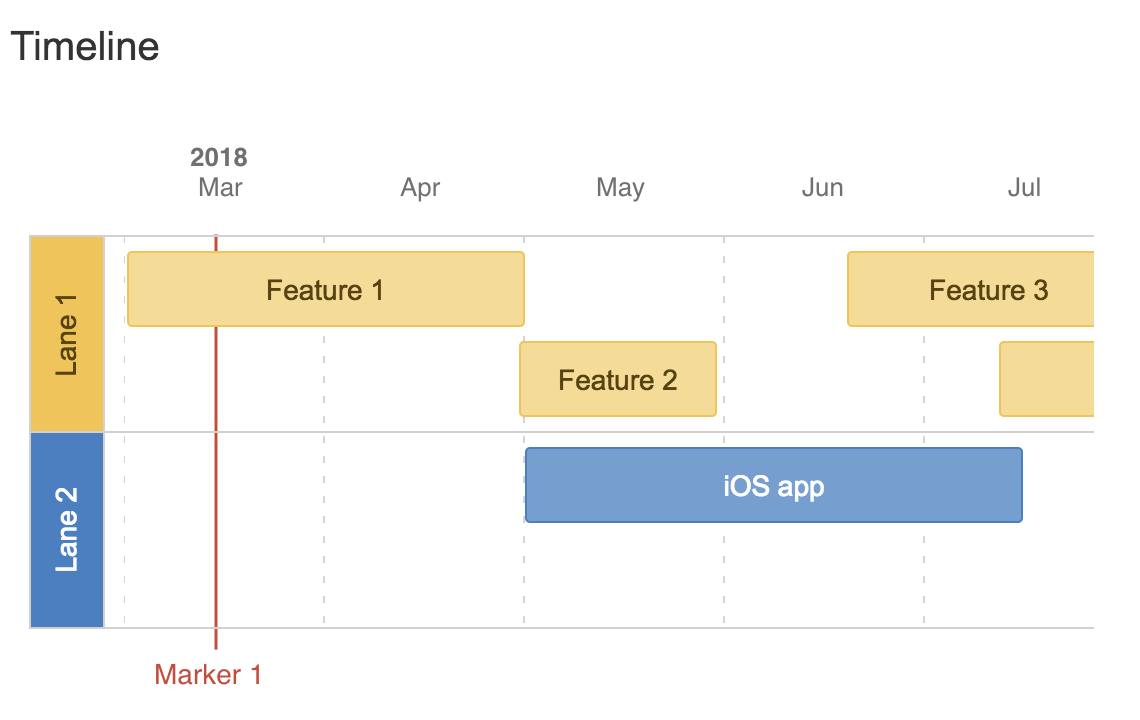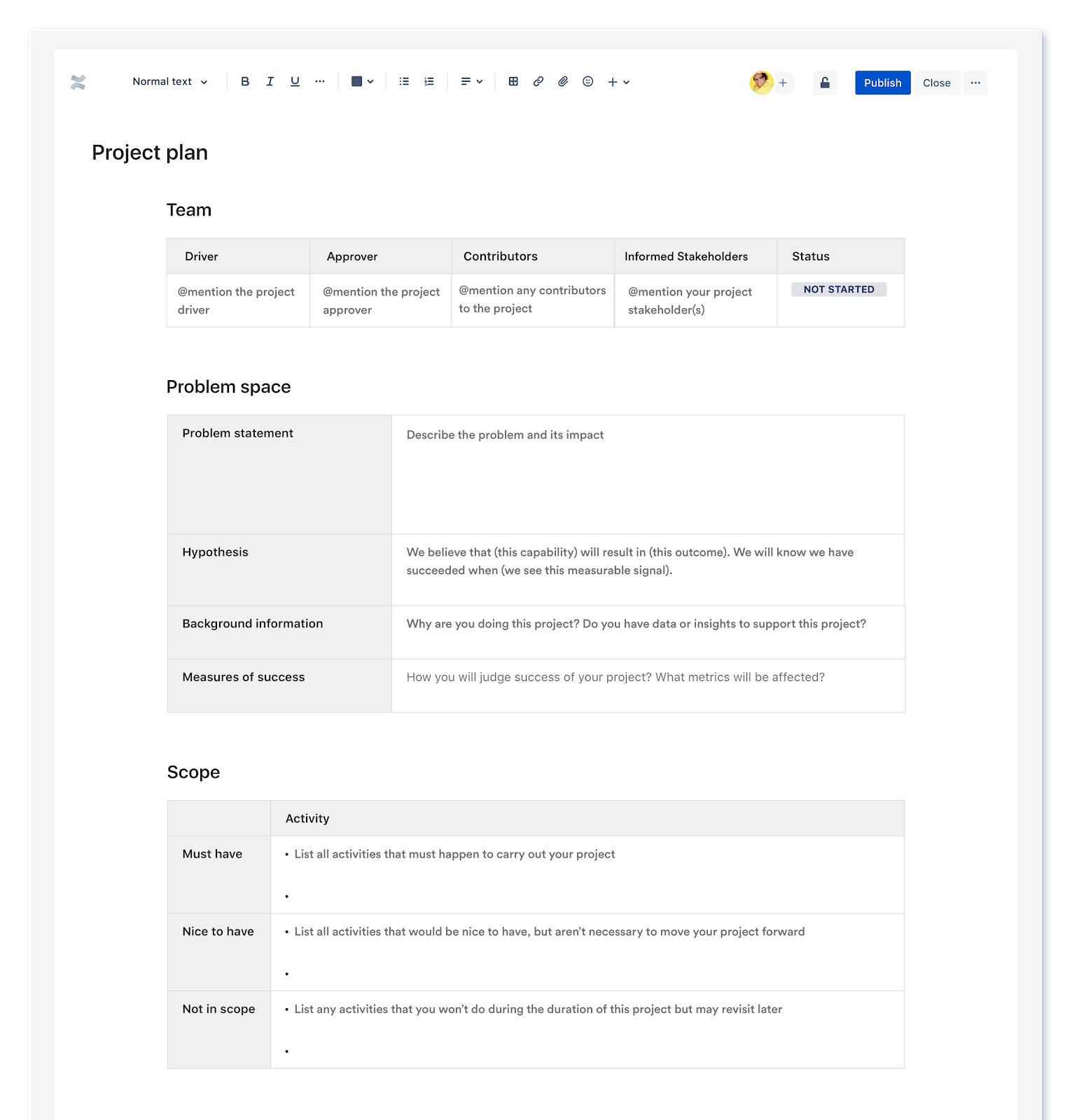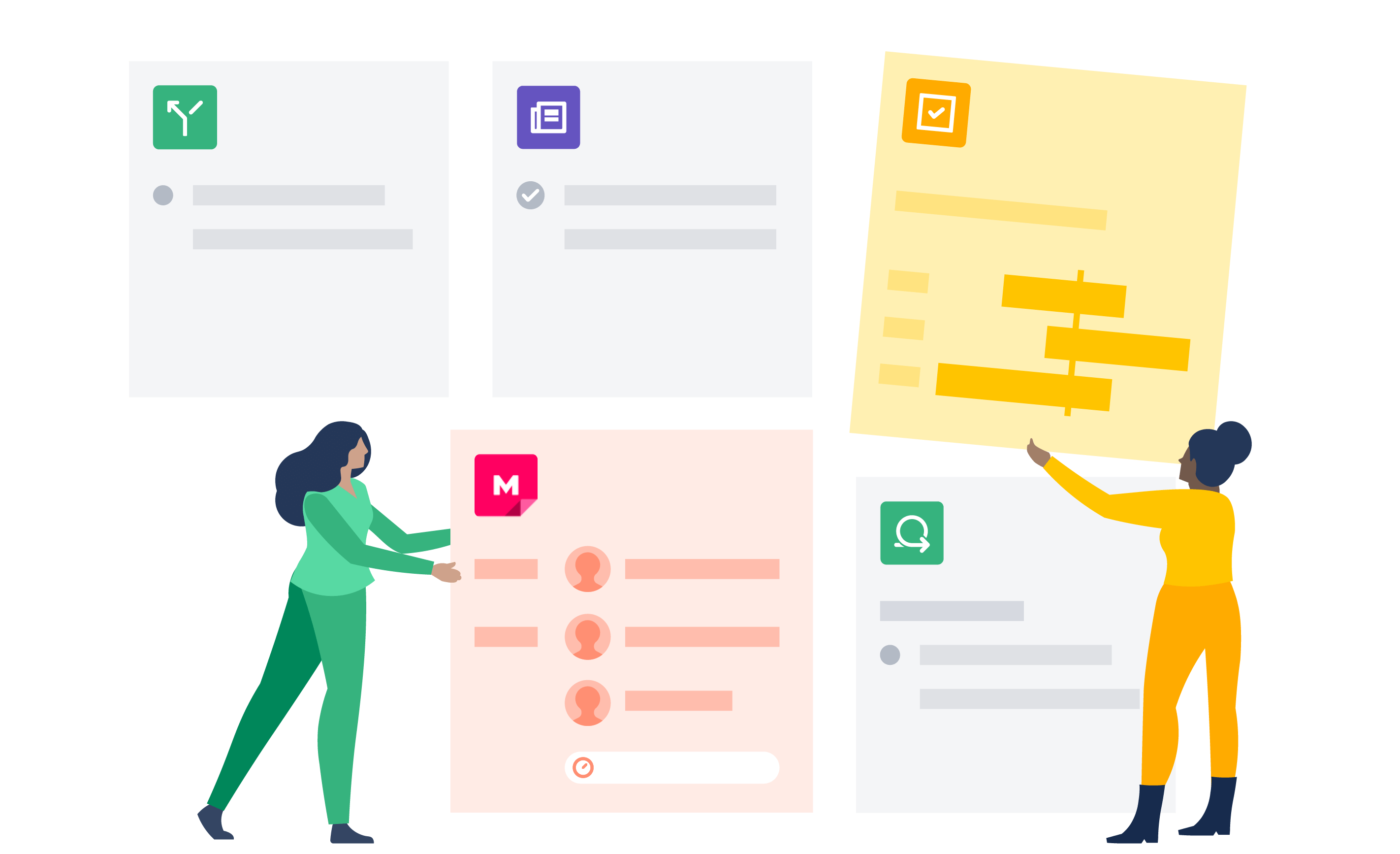如何创建简单、可靠的项目计划
好的项目计划不仅仅是列出何时该做什么
大多数人听到“项目计划”时,通常会想象成某种时间表,即一份列出何时该做什么的清单,但这只是其中一小部分。优秀的项目经理会制定计划,该计划不仅涵盖他们努力解决的问题,还会涵盖其范围、交付成果、风险和项目依赖关系,从而指明项目成功之路。
如果没有项目计划,团队成员可能会发现自己迷失在复杂的“迷宫”中。他们可能不知道从哪里开始,甚至更糟糕的是,他们可能未清楚了解自己的工作如何以及何时融入全局就开始深入执行任务。
什么是项目规划?
项目规划是指定义目标、范围和完成项目所需进行的活动的过程。这是项目管理的一个基本方面,涉及到设定明确的目标、确定资源、估算成本和制定项目成功路线图。
项目规划为有效的执行和监控奠定了基础。此过程让项目经理和团队能够协调工作与资源,减少不确定性,并提高按时和按预算交付项目的可能性。
什么是项目计划?
项目计划是指项目规划过程的切实成果。这是一份全面的文档,概述了项目的关键要素,其中包括目标和目的、范围、时间表、资源需求、风险和依赖关系。
项目计划充当所有利益相关者的路线图,让他们能清楚地了解项目的目的、里程碑和预期成果。它指定了团队成员和必要的项目规划工具,并详细说明了取得成功所需的步骤。
结构清晰的项目计划不仅可以指导项目执行,还可以充当沟通工具,让每个人在项目的整个生命周期中都能及时了解情况并紧密合作。
项目规划的好处
- 清晰度和一致性:项目规划建立了对项目目标和范围的共识,确保所有团队成员与利益相关者达成一致。这种清晰度减少了误解和存在冲突的期望。
- 资源分配:项目规划有助于确定和分配所需的资源(无论是人力、财力还是物力)。这优化了资源利用率并防止过度分配。
- 风险管理:项目规划支持识别和评估潜在风险。通过规划风险,项目团队可以主动处理和缓解风险。
- 时间管理:结构清晰的项目计划包含了标明里程碑与任务依赖关系的时间线,让团队能更轻松地管理项目时间表和满足截止时间要求。
- 成本控制:通过在项目规划阶段估算项目成本,组织可以更有效地跟踪和控制费用。
- 改善沟通:项目计划充当沟通工具,可让所有利益相关者及时了解情况,确保每个人都了解项目进度、变更和问题。
- 质量保证:规划可以包含质量标准和流程,以确保项目交付高质量的结果。
- 强化问责制:项目计划指定任务负责人,明确具体活动由谁负责,从而促进问责制的落实。
- 高效决策:规划有助于定义决策流程,让团队在项目进行期间更轻松地解决问题和做出关键决策。
项目规划流程(含步骤)
使用分步完成的方法来创建项目计划可能看起来比较繁琐,但这对于制定坚实而成功的战略至关重要。在深入执行规划流程之前,请花些时间反思一下您的团队、组织、可用资源和项目目标。从项目规划阶段开始之时,就必须努力与团队建立共识。
第 1 步:将项目计划视为地图
绘制路线图时,问问自己下面问题会有所帮助:
- 目的地是什么?
- 如何确定项目何时结束?
- 关注这张路线图的人有谁?
- 在项目进行期间会经历哪些里程碑?
- 可能会遇到什么障碍?
有可供选择的备用路线吗?
第 2 步:了解您的利益相关者
了解组织政治、难以相处的个性以及在项目管理过程中可能出现的争论点。PMP 兼软件技术支持中心项目经理 Larry W. Smith 强调了利益相关者分析的重要性。Smith 认为,每个人都希望项目取得成功,但是忘记满足哪怕一位有影响力的利益相关者的需求,也可能会打乱最周密的计划。
Smith 建议花点时间:
- 明确谁是项目利益相关者
- 了解他们的期望和影响力水平
- 决定在项目进行过程中如何整合来自同行和利益相关者的反馈
- 将所有需求和期望与风险规划和风险响应活动联系起来
- 认真规划所有项目沟通策略
清晰沟通的重要性怎样强调都不为过。因此,Atlassian 的常驻项目领导合作伙伴 Bernie Ferguson 从项目最初阶段开始,就会与利益相关者进行沟通:
“我们使用项目海报方法在团队成员和利益相关者之间建立共识。我们要做什么?对客户和企业有什么价值?为什么我们认为这是正确的解决方案?在将任意事物纳入团队的路线图之前,我们会获取有关所有这些问题的答案的反馈。”— Bernie Ferguson,Atlassian
第 3 步:摆脱有色眼镜并绘制时间线
项目经理经常会犯过于乐观的错误。PM 不应专注于可能最好的成果,而应考虑可能出现的问题,以及它们如何影响项目管理时间线。
进行必要的尽职调查、举办“事前分析”研讨会,或与关键利益相关者举行一对一会议,这些都是识别潜在障碍的好方法。
考虑询问其他项目经理规划类似项目需要多长时间,从而草拟出时间线。与您将合作的团队会面,了解具体的项目任务需要多长时间来完成。使用项目管理工具,在已归档项目中搜索旧的项目时间表。

通过重申沟通的意义来强调沟通的重要性。让所有相关方了解项目的细节,这是因为,换做是您,难道您不想知道吗?简化的甘特图是一种有效的项目时间线可视化方法,每个人都很容易理解。
第 4 步:招募朋友和同事
作为项目经理,您要负责交付项目计划(以及最终的项目)。这不只是说走进隔间开始写计划,制定项目计划时,必须让所有关键利益相关者参与进来。与他们持续保持联系,您会发现他们是极好的资源。
通过收集团队的想法和集思广益,您可以快速得出有意义的结论。团队协作能培养团体支持感,有助于制定出更好的项目计划。
Atlassian 使用模板来减少与规划过程相关的开销,并引发对项目规划最佳实践至关重要的讨论。项目计划模板是让员工思考可能有待其考虑的项目管理方面的绝佳方式。
在电梯中有效推销您的项目是一回事,但创建可靠而有效的计划是完全不同的另一回事。面对现实吧:规划项目风险和依赖关系并非易事。Atlassian 强大的模板和有用的提示让项目经理能够有条不紊地思考如何创建项目计划,从而减少疏忽并提高工作效率。

第 5 步:仔细考虑目标和项目范围
创建问题陈述,非常明确地定义您想要实现的成果。然后提出一个假设,说明您认为问题的解决会导致什么情况。接下来,简要概述项目背景,以及支持该项目的任何相关数据或洞察信息。最后,确定用于衡量项目成败的关键指标。这些成功指标可能会影响计划的各个方面,并帮助明确其方向和重点。
询问团队成员需要什么,而不是问什么是最好有的或不必要的。在规划过程的早期就对项目范围(包括明确排除在外的内容)建立清晰的认识,可最大限度地降低利益相关者沟通不畅的风险。这还有助于为项目贡献者确定适当的时间分配。这种明确性使得在项目范围发生任何变化时更容易识别和管理。
第 6 步:预测意外
几乎所有的项目计划都包含有关预算、项目时间表和范围的详细信息。但是,一个好的计划还会回答有关项目的基本问题,包括:
- 资源:项目需要哪些类型的技能?谁有空?预算是多少?
- 决定:谁将提出建议?谁将批准或不批准申请?
- 沟通:谁将负责进行有关进度和障碍的沟通?
- 风险:团队成员应该注意什么?记录和跟踪威胁的流程是什么?
- 评论:项目发布之前,您打算如何收集反馈?
- 批准:还有谁需要在这上面签字?谁是最终的决策者?
时机:团队成员的工作时间表是否符合项目时间线?截止时间是如何选择的?
您的计划不必详细说明每个问题,但它应该提供足够的信息,使您能够顺利实施项目,而不会出现很多意外。
选中标记 提示:使用 DACI 方法及时针对您的项目做出明智的决策。
提示:使用 DACI 方法及时针对您的项目做出明智的决策。
第 7 步:选择项目管理方法
大多数 PM 会选择瀑布式或敏捷开发项目管理方法。敏捷开发方法通过持续评估项目计划、要求和结果的迭代过程快速交付结果。在这种方法中,我们将时间和资源视为固定不变。
瀑布法是一种线性的按顺序执行的流程,可逐个阶段、逐个团队地向前推进项目。对于该方法,我们认为范围是固定的,而时间和资源仍然保持灵活。
第 8 步:编写并审查您的计划
一旦您回答了所有问题、展开了所有讨论,还写了无数张便利贴,就可以写出您的项目计划了。无论是您选择的字词还是格式和设计,都要保持简单。
以下是应在任何计划中包含的有用细节:
- 项目名称
- 交付日期
- 预算
- 计划的目标
- 重点里程碑和预期的可衡量影响
- 每项任务的预计开始和完成时间
- 标注突出显示单个任务的负责人
- 任务细节和注释,以明确应该发生什么
标注相互依赖的风险和任务(或团队),以帮助避免延误
项目计划完成后,花时间邀请尚未参与编写流程的人员对其进行审查。拥有另一双眼睛可以帮助发现自然的人为错误。
选中标记 提示:估算每项任务的大小时,要抵制深入细节的诱惑。请记住,这些都是有根据的猜测。
提示:估算每项任务的大小时,要抵制深入细节的诱惑。请记住,这些都是有根据的猜测。
第 9 步:分享您的计划,让大家都能看见!
您的项目计划一经最终确定并经过全面审查后,就该与积极参与的个人和需要随时了解情况的利益相关者进行分享了。为激动人心的项目启动做好准备,使项目开始实施起来。必须认识到变更和挑战是任何项目不可或缺的一部分,因此做好应对它们的准备至关重要。
在整个项目生命周期中,与您的计划保持密切联系。专注于核心项目要素、预期范围和商定的步骤。这种方法可确保您不偏离方向,并增加成功交付项目的可能性,即使面对意想不到的开发,也能从容应对。
项目计划示例
以下是营销活动项目计划的简化示例:
项目名称:春季产品发布营销活动
- 项目大目标和小目标:
- 将品牌知名度提高 20%。
- 在三个月内挖掘 1,000 个商机。
- 将春季的销售收入提高 15%。
- 范围:
- 创建一系列线上和线下营销材料。
- 推出新的产品线。
- 开展数字广告营销活动。
- 项目时间表:
- 第 1 阶段(第 1 月和第 2 个月):营销活动策略和内容创作。
- 第 2 阶段(第 3 个月):发布和营销推广。
- 资源:
- 营销团队(4 名成员)。
- 广告和材料预算:50,000 美元。
- 风险:
- 不可预测的天气会影响户外活动。
- 市场竞争导致价格战。
- 依赖关系:
- 完成产品开发(在营销活动启动之前)。
- 准备好营销材料(在广告宣传之前)。
- 质量保证:
- 定期审查和反馈会议,以确保高质量的内容。
- 任务负责人:
- 营销活动策略:Sarah
- 内容创作:John
- 产品发布:Emily
广告营销活动:Mark
该示例计划涵盖项目目标、范围、时间线、资源、风险、依赖关系和质量衡量标准,可以作为利益相关者和项目团队成员在整个营销活动中的重要参考。
制定有效的项目计划
在项目管理领域,全面且结构严谨的项目计划是指导团队和利益相关者成功完成项目的指南针。项目规划不仅是一份任务清单,还是一个定义项目目标、分配资源、评估风险和提供成功路线图的复杂流程。
通过采取深思熟虑、循序渐进的方法,项目经理可以在项目的整个生命周期中提高透明性、协作性和适应性,从而最终增加在预算范围内按时交付项目的可能性。
